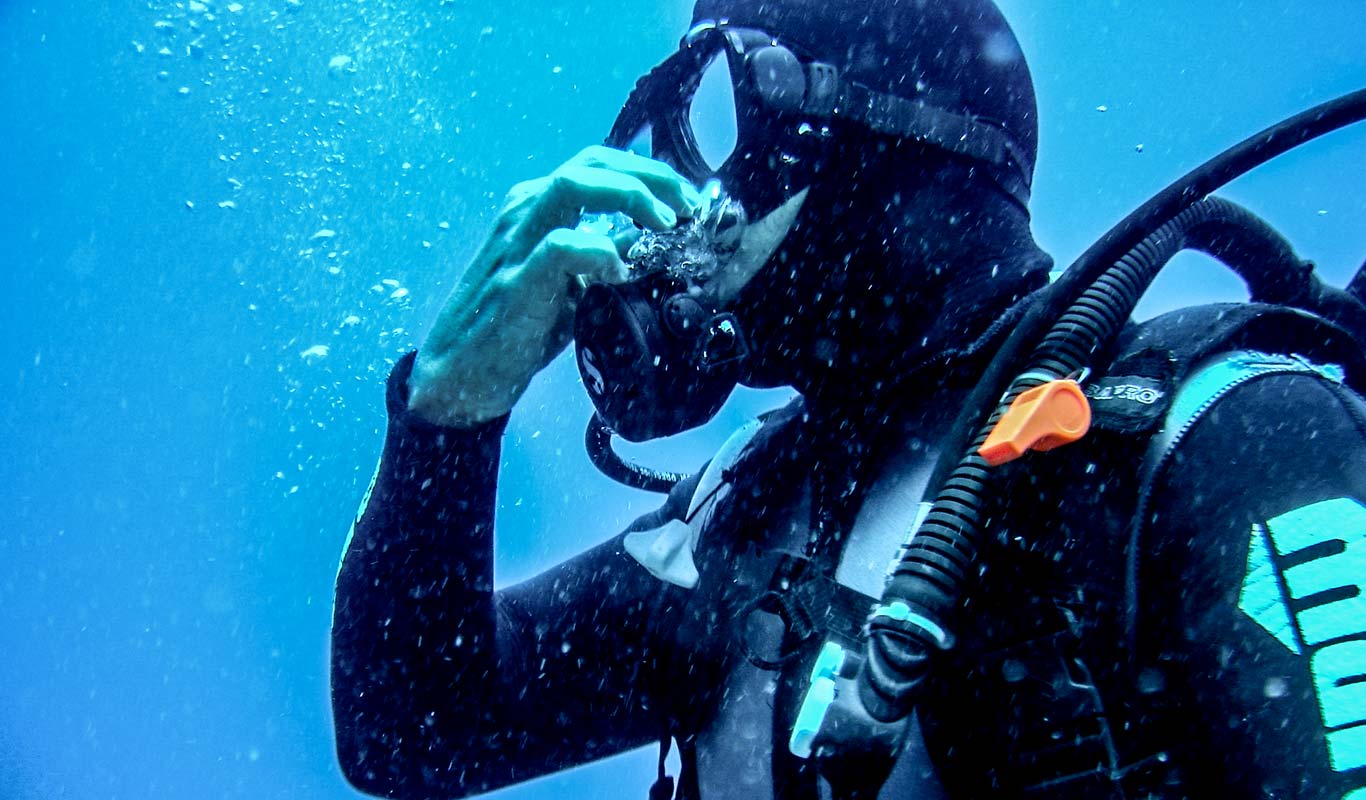Scuba Diving 101: Equalizing Tips
A dive can be completely ruined when you can’t equalize.
Imagine yourself at your dream destination, ready to jump in some beautiful turquoise water for an unforgettable dive… sounds amazing, right? But then it happens, you jump in, start your descent and after only a few feet your ears start screaming at you... you try to go up some relieve pressure and try descending again but with no luck… You have no choice now other than to abort your dive and return to the boat. Dive ruined… NO, it doesn’t have to be this way! It’s time to learn how to equalize the right way.
There are a lot of divers (even experienced divers) out there that don’t equalize the right way. Quite a few divers will ‘push’ too much, resulting in being stuck on land for weeks due to problems caused by equalizing. There are even divers that end up with permanent ear damage due to problems with equalizing.
The traditional way that everyone’s been taught when starting diving might not be the best way for you, pinching the nostrils while blowing through your nose (Valsalva Maneuver) might work for you, but the resulting overpressure in your throat uses forces air up your Eustachian tubes. If you equalize early and often, you’ll keep the tubes open and you might not have any issues, but failing to do so could result in the soft tissues being forced together and closing off the ends of the tubes—locking them shut.
There’s different techniques that you can use to equalize, and it’s up to you to find out which one works best for you. The sooner, and more often you equalize, the better chance you’ll have to have a successful (and pain free) dive.
Different Equalizing Techniques That Can Be Used:
Pinch your nose and swallow (Toynbee Maneuver) - Swallowing pulls open your Eustachian tubes while the movement of your tongue, with your nose closed, compresses air against them.
Pinch Your Nose, Blow and Swallow (Lowry Technique) - While closing your nostrils, blow and swallow at the same time.
Pinch Your Nose and Blow and Push Your Jaw Forward (Edmonds Technique) - Pinching your nostrils while blowing through your nose, all while tensing the soft tissue at the back of the roof of your mouth and throat muscles and pushing the jaw forward and down.
Pinch Your Nose and Make the Sound of the Letter “K” (Frenzel Maneuver) - Close your nostrils, and close the back of your throat. Then make the sound of the letter "K." This forces the back of your tongue upward, pushing air against the openings of your Eustachian tubes.
Tense Your Throat and Push Your Jaw Forward (Voluntary Tubal Opening) - Tense the muscles of the soft palate and the throat while pushing the jaw forward and down as if starting to yawn. These muscles will pull the Eustachian tubes open. Some divers learn to control these muscles and hold their tubes open for continuous equalization. This requires a lot of practice though.
These techniques work well for equalizing, but there are more ways that you can consider making the equalizing process easier. Especially if you feel like you have ‘difficult’ ears you might want to consider trying some other things that make equalizing easier.
Pre-Dive Equalizing Tips
Before diving you want to avoid tobacco smoke as it can irritate your membranes, resulting in more mucus to block your Eustachian tubes. You should also swallow before you even get ready to go diving to see if you hear a click or a pop in both ears what will tell you if both Eustachian tubes are open. While waiting to get in the water you can start equalizing every so often as this might reduce the risk of a block in the beginning of your descent. In the water on the surface you’ll equalize again before starting the descent as it might help you get past the critical first few feet. Now it’s time to go underwater. Use a descent line if there’s one available. It’ll help you have a more controlled descent. As you’re descending, you want to stay feet down since it tends to be harder to equalize diving down head first. Looking up while equalizing can be helpful as well as extending your neck opens up the Eustachian tubes.
Equalizing often will keep a slight positive pressure in your ears that will keep you ahead of the game and make sure to never ‘push through’ and continue your descent when you feel pain. Your Eustachian tubes will probably be locked shut at this point and pushing through will not open them and very possibly lead to injury. So, don’t do it! Just stop, ascent a few feet until you’ll feel relieve and try again.
It sometimes takes a while to get to the bottom but if you’ll equalize the right way and listen to your body on your descent, you’ll be ready to enjoy the rest of your dive... and the next one!!!



